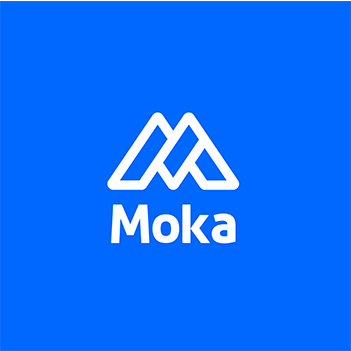How to Fix a Slow Hiring Process with Actionable Steps

Have you ever wondered how much a slow hiring process could cost your business? It’s more than just time. The best candidates often move on within 10 days, leaving you with fewer options. On top of that, a lengthy hiring process can frustrate candidates, leading to negative reviews that hurt your reputation. CEOs even rank recruitment as one of the most inefficient processes, with 40% of it being wasteful. The good news? With the right strategies, you can streamline your hiring process and avoid these pitfalls.
Key Takeaways
Write clear job descriptions to attract the right people. Spend time making them detailed to save effort later.
Use tools to handle tasks like resume sorting. This can save up to 23 hours weekly and find better candidates.
Create timelines for each hiring step. This helps your team stay on track and avoids losing great candidates.
Talk to candidates often and give updates. This builds trust and keeps them interested in the job.
Use different ways to find candidates. This helps you find great people and supports diversity.
Common Barriers in a Slow Hiring Process

Lack of Clear Job Descriptions
When your job descriptions are unclear, you risk attracting the wrong candidates. This misalignment can lead to wasted time and resources during the hiring process. For example, unclear descriptions often result in higher dropout rates during applications and misaligned expectations between you and the candidates. These issues not only slow down the process but also hinder diversity and inclusion efforts.
Impact Description | Effect on Candidate Quality | Effect on Hiring Timelines |
|---|---|---|
Yes | Yes | |
Misalignment of expectations | Yes | Yes |
Wasted time and resources | Yes | Yes |
Hindered diversity and inclusion | Yes | No |
To avoid these problems, focus on crafting detailed and accurate job descriptions. This small step can save you time and improve the quality of your hires.
Inefficient Screening and Shortlisting
Screening and shortlisting candidates manually can be a major bottleneck in your recruitment process. It’s time-consuming and often leads to delays in finding the right talent. On average, inefficiencies in this stage can increase your time-to-hire and reduce the quality of your hires.
High time-to-hire
Poor quality of hire
Metric | Impact on Hiring |
|---|---|
Manual Labor Saved | |
Time-to-Hire Reduction | Significant decrease |
Cost Reduction | Up to 30% |
Screening Accuracy | 85-95% |
By streamlining this step, you can save up to 23 hours per week and reduce costs by as much as 30%. Plus, it enhances the quality of your hires and reduces bias in decision-making.
Prolonged Interview Scheduling
Scheduling interviews might seem simple, but it’s one of the biggest recruitment barriers. Did you know that 67% of recruiters spend between 30 minutes and 2 hours just scheduling a single interview? Worse, 60% of recruiters lose candidates before even scheduling an interview. These delays can stretch your time-to-hire to three or four weeks, with only 25% of roles filled in under two weeks.
Pro tip: Use scheduling tools to coordinate interviews faster and avoid losing top candidates.
When you streamline this process, you’ll not only save time but also keep candidates engaged and excited about the opportunity.
Delayed Decision-Making
When decisions take too long, your hiring process slows down, and you risk losing top talent. Candidates often expect quick responses, but delays can create frustration and even lead them to withdraw from the process.
Here’s how delayed decision-making can hurt your recruitment efforts:
49% of candidates feel stressed by drawn-out hiring processes.
Long gaps between updates damage your relationship with candidates.
High stress levels can leave candidates with a negative impression of your company.
According to industry experts, inefficiencies in decision-making not only frustrate candidates but also increase the chances of them abandoning the process altogether. This creates a vicious cycle, making it even harder to fill roles quickly.
Evidence | Explanation |
|---|---|
This shows how delays directly lead to losing high-quality candidates. | |
Candidates are usually off the market in 10 days | This highlights the competitive nature of hiring and the need for speed. |
To overcome this barrier, set clear deadlines for each stage of the hiring process. Use collaborative tools to ensure decision-makers stay aligned and responsive.
Poor Communication with Candidates
Poor communication is one of the most common recruitment barriers. Candidates want to feel valued, but when they don’t hear back, they may lose interest or develop a negative perception of your company.
Here’s what candidates have said about communication during hiring:
28% find a lack of responsiveness the most frustrating part of the process.
78% expect regular updates, but only 37% actually receive them.
Long wait times and silence often lead to dropouts and dissatisfaction.
When candidates feel neglected, they’re more likely to share their experiences online, which can harm your employer brand. To fix this, prioritize timely updates. Use automated tools to send regular notifications and keep candidates informed at every step. A little effort goes a long way in building trust and keeping candidates engaged.
Actionable Steps to Overcome a Slow Hiring Process
Automating Repetitive Tasks
Repetitive tasks like resume screening, interview scheduling, and reference checks can slow down your recruitment process. Automation tools can handle these tasks efficiently, freeing up your team to focus on more strategic activities. For example, using a robust applicant tracking system can streamline candidate management and ensure no one falls through the cracks.
Automation doesn’t just save time—it also reduces costs. Companies have reported up to a 30% decrease in HR expenses per hire. It’s not just about saving money, though. Automation can cut the time to interview from 10 days to just 2, and the time to hire from 21 days to 10. Imagine how much faster you could fill roles with these improvements! Plus, recruiters save up to 20 hours per week, allowing them to focus on building relationships with top talent.
Setting Clear Timelines and KPIs
A slow hiring process often lacks structure. Setting clear timelines and key performance indicators (KPIs) can help you stay on track. Start by mapping out your recruitment process. Define how long each stage—from job posting to offer acceptance—should take. Assign specific roles and responsibilities to your team to avoid confusion.
For example, you can use a RACI matrix to clarify who’s responsible for each task. Also, track metrics like time to review applications, time to schedule interviews, and time to extend offers. These benchmarks will help you identify bottlenecks and implement strategies to speed up the hiring process. A well-organized plan ensures everyone stays aligned and accountable.
Building a Talent Pipeline
Why wait until a position opens to start recruiting? Building a talent pipeline allows you to maintain a pool of qualified candidates who are ready to step in when needed. This proactive approach can significantly reduce time-to-hire. By developing relationships with potential candidates, you’ll already have a shortlist when a role becomes available.
Did you know that only 30% of companies fill a vacant role within 30 days? The rest take one to four months. A strong talent pipeline can help you beat those odds. It’s a game-changer for speeding the hiring process and staying competitive in today’s fast-paced job market.
Training Hiring Teams
Your hiring team plays a crucial role in speeding up the recruitment process. Without proper training, they might struggle with identifying top candidates or managing the hiring stages efficiently. By investing in training, you can equip your team with the skills and tools they need to make faster, more informed decisions.
Training programs should focus on key areas like interview techniques, unconscious bias awareness, and effective communication. For example, teaching your team how to ask the right questions during interviews can help them assess candidates more accurately. Additionally, training on diversity and inclusion ensures your team evaluates candidates fairly, which can expand your talent pool.
Tracking metrics is essential to measure the impact of training. Here’s a quick look at some useful metrics:
Metric | Description |
|---|---|
Measures the percentage of candidates that progress through each stage of the hiring process. | |
Cost of optimum productivity | Total costs associated with recruiting and training new hires, highlighting the financial impact. |
Time to optimum productivity | Duration it takes for a new hire to reach full productivity, indicating the effectiveness of onboarding. |
Referral rate | Percentage of hires that come from employee referrals, reflecting employee engagement and satisfaction. |
Turnover rate | Percentage of employees leaving the company, which can indicate the effectiveness of hiring practices. |
By focusing on these metrics, you can identify areas for improvement and refine your strategies to overcome a slow hiring process.
Leveraging Data and Analytics
Data and analytics can transform your recruitment process. They help you make smarter decisions by identifying patterns and trends. For instance, analytics can reveal which job boards attract the most qualified candidates or which stages of your hiring process take the longest.
Using data, you can also improve time-to-hire. By analyzing each stage—screening, interviewing, and offer—you’ll spot bottlenecks and address them quickly. This ensures you don’t lose top candidates due to unnecessary delays. Additionally, data-driven insights help you focus on the right talent pools, reducing time spent on unqualified applications.
Here are some ways data and analytics can enhance your recruitment strategies:
Identify candidates with promising qualities, saving time on unqualified applications.
Reveal patterns in the labor market to guide candidate outreach efforts.
Improve the quality of hires, leading to quicker hiring decisions.
When you leverage data effectively, you not only speed up the process but also improve the overall quality of your hires.
Diversifying Recruitment Channels
Relying on a single recruitment channel limits your access to top talent. Diversifying your channels ensures you reach a broader audience and attract candidates from different backgrounds. This approach not only speeds up hiring but also supports your diversity and inclusion goals.
For example, you can use social media platforms, employee referrals, and niche job boards to expand your reach. Each channel offers unique advantages. Social media helps with candidate outreach, while referrals often bring in high-quality candidates quickly. Niche job boards connect you with specialized talent pools.
Key metrics can help you evaluate the effectiveness of your channels:
Talent Magnetism Index: Measures the number of qualified candidates visiting your career site.
Talent Pool Depth: Reflects the number of qualified candidates in your talent community.
Application-to-Interview Ratio: Indicates how well your screening process identifies qualified candidates.
Interview-to-Offer Ratio: Evaluates how aligned your interview process is with job requirements.
By diversifying your recruitment channels, you’ll not only reduce hiring delays but also attract a higher number of quality candidates.
Implementing Asynchronous Interviewing
Asynchronous interviewing is a game-changer for modern recruitment. It allows candidates to record their responses at their convenience, eliminating the need for real-time scheduling. This flexibility not only saves time but also creates a more inclusive and efficient hiring process.
Here’s how asynchronous interviewing can benefit your recruitment process:
Benefit | Description |
|---|---|
Candidates can schedule interviews at their convenience, eliminating travel costs and reducing stress. | |
Create an Inclusive Interview Process | Expands the candidate pool by accommodating those with physical or geographical restrictions. |
Reduce Bias and Improve Evaluations | Mitigates unconscious bias by focusing on merit-based evaluations through standardized tests. |
Reduce Hiring Times and Costs | Lowers recruitment costs and allows for multiple interviews in a shorter timeframe. |
Employ Rigorous Screening Practices | Enables comprehensive evaluations through recorded formats, allowing recruiters to assess at their pace. |
By adopting this approach, you can streamline your recruitment process while ensuring fairness and accessibility for all candidates.
Automating Reference Checks
Reference checks are essential but often time-consuming. Automating this step can significantly speed up your hiring process. Automated tools collect reference information quickly, allowing you to focus on evaluating candidates.
Automated reference checks practically run themselves, allowing for the majority of reference information to be obtained within 48 hours. This efficiency enables recruiters to identify leading candidates earlier in the hiring process, thus expediting hiring decisions.
With automation, you’ll not only save time but also improve the accuracy and consistency of your reference checks. This ensures you make better hiring decisions without unnecessary delays.
Enhancing Candidate Experience
A positive candidate experience is crucial for attracting top talent. When candidates feel respected and valued, they’re more likely to stay engaged throughout the hiring process. Simple strategies like clear communication, structured interviews, and timely updates can make a big difference.
Here are some measurable benefits of improving the candidate experience:
Reduced drop-off rates
Enhanced employer branding
Implementing structured practices, such as using evaluation rubrics and holding effective intake meetings, can create a more efficient and respectful hiring process. These efforts not only improve the candidate experience but also strengthen your recruitment outcomes by increasing satisfaction and retention.
Fostering Team Collaboration
When hiring slows down, poor collaboration among hiring teams is often the culprit. If your team isn’t aligned, the process can feel like a game of telephone—messages get lost, and decisions take forever. But here’s the good news: you can fix this by fostering better teamwork.
Start by creating a shared space where everyone can communicate easily. Tools like Slack or Microsoft Teams work wonders for keeping conversations organized. You can also use project management tools like Trello or Asana to track progress. These platforms ensure everyone knows what’s happening and what’s next.
Another way to improve collaboration is by holding regular check-ins. Weekly or bi-weekly meetings give your team a chance to discuss challenges, share updates, and stay on the same page. Keep these meetings short and focused. For example, you could dedicate 10 minutes to reviewing candidates and 5 minutes to assigning next steps.
Clear roles and responsibilities also make a big difference. When everyone knows their part, there’s less confusion and fewer delays. Use a simple chart or list to outline who’s responsible for each stage of the hiring process. For instance, one person might handle screening while another focuses on scheduling interviews.
Finally, encourage open feedback. If something isn’t working, your team should feel comfortable speaking up. This helps you identify and fix problems before they slow things down.
By improving collaboration, you’ll speed up hiring and create a smoother experience for everyone involved. Plus, your candidates will notice the difference. A well-coordinated team leaves a great impression, making your company more attractive to top talent.
Benefits of Fixing a Slow Hiring Process

Attracting and Retaining Top Talent
A faster hiring process gives you a competitive edge in attracting top talent. The best candidates don’t wait around—they’re off the market in days, not weeks. When you streamline your recruitment process, you reduce the risk of losing these candidates to competitors. Setting clear timelines and making quick decisions show candidates that you value their time and skills.
Keeping candidates informed at every stage also enhances their experience. Regular updates and transparent communication build trust and keep them engaged. Using data and analytics can further speed things up by helping you identify the right candidates faster. This efficiency not only prevents talent loss but also improves your business agility.
Tip: A well-organized hiring process reflects positively on your company, making it easier to attract and retain top talent.
Reducing Costs and Improving Productivity
A slow hiring process can drain your resources. Every extra day spent on recruitment adds to your costs, from advertising job postings to paying for additional hours of work by your hiring team. By fixing inefficiencies, you can significantly cut these expenses. For example, automating repetitive tasks like resume screening and reference checks saves time and reduces labor costs.
Faster hiring also means your team can focus on their core responsibilities instead of being bogged down by lengthy recruitment cycles. Filling roles quickly ensures your team operates at full capacity, boosting overall productivity. Plus, a streamlined process leads to a higher quality of hire, which means new employees can contribute effectively from day one.
Strengthening Employer Branding
Your hiring process speaks volumes about your company. A smooth and efficient process leaves candidates with a positive impression, even if they don’t get the job. This strengthens your employer brand and makes your company more appealing to top talent. On the flip side, a cumbersome process can frustrate candidates and lead to negative reviews on platforms like Glassdoor.
When candidates share their experiences—good or bad—it impacts how others perceive your company. A refined hiring process ensures every candidate feels valued, which enhances your reputation. This not only attracts high-quality candidates but also helps you stand out in a competitive job market.
Note: A strong employer brand isn’t just about attracting talent—it’s about building long-term trust and credibility.
Fixing a slow hiring process isn’t just about saving time—it’s about transforming how you attract and retain talent. By addressing common barriers like unclear job descriptions, inefficient screening, and delayed decision-making, you can create a smoother, faster recruitment experience. Implementing strategies like automation, data analytics, and team collaboration ensures you stay ahead in today’s competitive job market.
Here’s a quick look at the benefits of streamlining your hiring process:
Metric | Description | Implication for Hiring Process |
|---|---|---|
Time-to-hire | Average duration from job posting to offer acceptance. | Shorter times indicate a more efficient process. |
Total expenses incurred in filling a position. | Lower costs suggest better resource utilization. | |
Quality of hire | Long-term performance and retention rates of new hires. | Higher quality indicates effective talent acquisition. |
When you optimize your hiring process, you’ll reduce costs, improve productivity, and attract top talent. Start small, track your progress, and keep refining. The results will speak for themselves.
FAQ
What is the ideal time-to-hire for most companies?
The ideal time-to-hire varies by industry, but most companies aim for 30 days or less. A shorter timeline helps you secure top talent before competitors do. Tracking this metric can reveal bottlenecks in your process.
How can I improve communication with candidates?
Use automated tools to send regular updates. Keep candidates informed about their application status and next steps. A simple email or text can make a big difference in keeping them engaged.
What tools can help speed up the hiring process?
Applicant tracking systems (ATS), scheduling tools, and automated reference check platforms are great options. These tools reduce manual tasks, save time, and improve efficiency.
Why is candidate experience so important?
A positive experience keeps candidates engaged and boosts your employer brand. Happy candidates are more likely to accept offers and recommend your company to others, even if they don’t get the job.
How do I measure the success of my hiring process?
Track metrics like time-to-hire, cost-per-hire, and quality-of-hire. These indicators show how efficient and effective your process is. Regularly reviewing them helps you identify areas for improvement.
See Also
10 Strategies to Enhance Your Hiring Process Using ATS
MokaHR’s Application Management System Enhances Your Hiring Process
Boost Recruitment Effectiveness with MokaHR’s Tracking System
From recruiting candidates to onboarding new team members, MokaHR gives your company everything you need to be great at hiring.
Subscribe for more information

